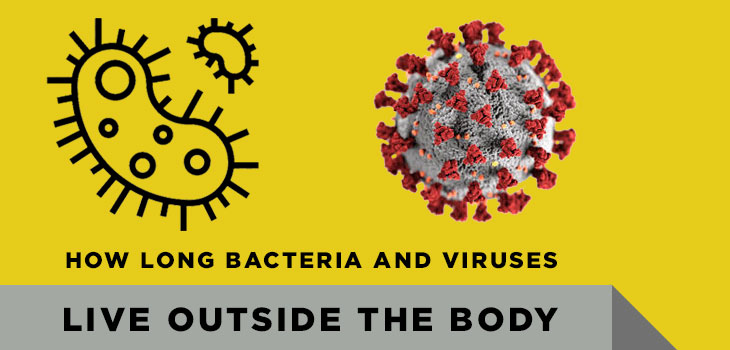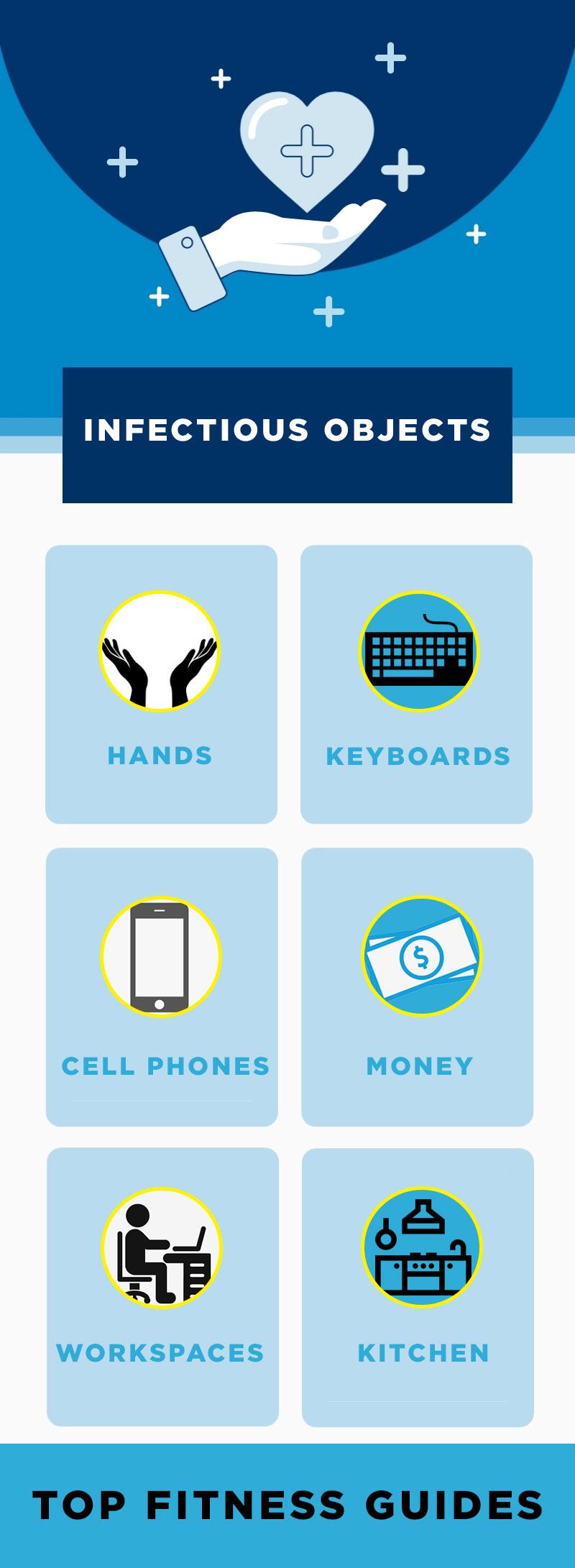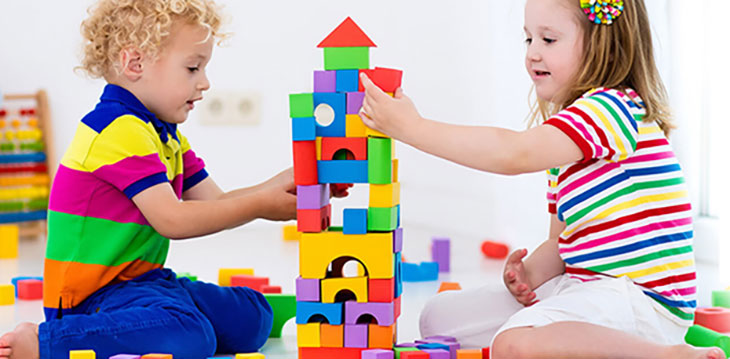Both viruses and bacteria are responsible for causing diseases in humans. Some may irritate mildly, while others become fatal. For this reason, you can follow NHS advise on health conditions, healthy living, symptoms, and medicines.
Remember, bacteria are 1000 times larger than viruses. Bacteria are single-celled organisms with an ability to reproduce asexually and independently. On the other hand, viruses require the assistance of living cells for reproduction.
Viruses and bacteria thrive in moist, warm environments. They may live for a long time on different surfaces, such as door handles, countertops, toys, curtains, computers, freezers, and refrigerators.
Remember, viruses and bacteria are tough stayers composed of different types that may adapt to a wide variety of environments. For instance, the wall of your drawing room may look clean, but it actually has numerous microscopic germs.
Virus Survivors
Generally, the human body is the first target of infectious viruses. The viruses may survive on different surfaces for a longer duration. For instance, a smallpox virus can live for numerous months or years on the laptop’s surface. At the same time these infectious flu viruses can survive on tissues only 15 for minutes.
For this reason, smallpox caused a distressing epidemic before its vaccine. Some viruses can survive for a short period outside the human body, but they still can infect people. Hepatitis C and B may live for 16 hours to 1 week.
Life of a cold virus may survive for one week, and viruses of the flue can die after 24 hours. Moreover, HIV can instantly die outside your body. Some viruses are widespread but less deadly, such as flu bugs stomach.
Viral gastroenteritis or Norovirus is the main reason for vomiting and diarrhea in children. It may live for weeks outside a body, based on the environment and surface.
Bacterial Attackers
Keep in mind viruses survive on hard surfaces, and bacteria choose porous surfaces, such as food and fabrics. They may adhere to small channels in the material and even produce spores for the expansion of their colonies.
Campylobacter and salmonella may be the reason for vomiting and diarrhea. These may live almost 1 – 4 hours outside your body.
The staphylococcus aureus bacterium can be the reason of hazardous MRSA infections. It can live for several weeks.
It may thrive without any moisture; therefore, they are dangerous for food service corporations and hospitals. Two strep strains may cause throat and ear infections, S. pyogenes, and S. pneumonia. These may survive for 24 hours on soft items, such as stuffed animals.
Familiar places for two strep strains are public places, schools, and daycare centers. With appropriate cleaning procedures, these bacteria may not survive overnight.
Personal and Up Close Services
Remember, bacteria and viruses sit on different objects around you. Some places may look dirtier as compared to others, but you can’t trust on looks. In public restrooms, you will find several infectious germs. Here are some examples of things with infectious germs:
Hands
These may be the dirty sections of the human body and the essential exposure points for viruses and bacteria. A person often touches his/her face with hands almost 16 times daily. It can bring germs in their mouth, nose, eyes, and ears.
Keyboards
Personal keyboards may contain three times more bacteria than a public seat of the toilet, such as 3,000 bacteria in a square inch.
Cell phones
Cell phones come in contact with your face and hand. They may be the primary carrier of germs. It is valid during the flu season because influenza may survive on one cell phone for almost 2 – 8 hours. Remember, MRSA may stay on your cell phones for almost 8 – 9 days following exposure.
Money
A bank may have hundreds of microorganism species, such as sufficient salmonella and E. coli to make individuals sick. Money frequently spread germs to wallets and purses, where they can live for a longer duration.
Workspaces
Office spaces have over six dirty spots to spread diseases, such as handles of the sink, office keyboards, door handles of the microwave, buttons of water fountains, and buttons of vending machine and door handle of the refrigerator. These will become riskier
Kitchen
Several surfaces of your kitchen may hold bacteria. You encounter these spaces daily, such as faucets, sinks, sponges, the floor, and drains. These spots may contain more bacteria than toilet seats and trash cans.
NHS Advise: Best Tools and Tips
NHS offers the best tools and tips for your wellbeing and health. You can find the best advice to lose weight, eat healthily, and decrease depression, anxiety, and stress. Moreover, they suggest some great exercises to improve your overall health.
How long germs survive on toys?
Toys, cribs, and books may harbor bacteria for a long duration. As per Buffalo Research University, Streptococcus pyogenes and Streptococcus pneumonia may persist for longer on toys and soft surfaces. For this reason, daycare centers, hospitals, and schools need extra precautions to avoid infections.
- pneumonia can be a significant reason for ear infections in kids, and mortality and morbidity from infections of the respiratory tract are prevalent in daycare centers. This situation can be dangerous in developing countries, where proper nutrition, common antibiotics, and fresh water are scarce.
Keep in mind, S. pneumonia may be the reason for sepsis and pneumonia. It is killing over one million kids annually. In school-going children, S. pyogenes spread skin infections and strep throat infections. No doubt, adults may get severe infections from this strand.
UB researchers found S. pneumonaie on eight out of ten stuffed toys of a daycare center. Moreover, several other surfaces tested positive for this bacteria, such as cribs, ball pits, and several other surfaces. They performed these tests in the morning before cleaning.
Viable viruses may not found on plastic surfaces and non-porous metals, including computer keyboards and aluminum after nine hours. The porous items, including clothes, wooden surfaces, and soft toys, may carry viable viruses for almost four hours.
- pyogenes and S. pneumonia can colonize mice from different contaminated surfaces. These biofilms can survive for several hours on hands, books, hard and soft toys. Moreover, pathogens may survive outside human hosts for a long duration.
Remember, you may get an infection by inhaling infected droplets that can be expelled through sneezing and coughing of infected people. Common objected containing the biofilm bacteria might become reservoirs of infection for hours, weeks, and even months. These may spread infections to different people who touch the infected objects.
How to avoid these infections?
Some cleaning protocols can help you to decrease lots of bacteria. Cleaning with water and soap could make a huge difference. This simple solution is enough to eliminate maximum bacteria. Moreover, you can prevent the spread of bacteria by washing hands.
Make sure to wash hands, especially after using the toilet and before handling any kind of food regularly. Moreover, immediately wash them after sneezing, blowing the nose, and coughing.
Keep your surround and home hygienic and clean, especially if a family member is ill. Wash fabrics at 60 degrees C because these may have viruses or bacteria. You can use laundry products containing bleach.
Covid-19: Understand its Spread and Prevention
Nowadays, people around the world are facing coronavirus. Coronavirus becomes a pandemic, and its vaccination is not available in the market. No doubt, scientists are working on its vaccination, but it may take one year or more.
For this reason, you have to protect yourself from this virus with social distancing. Remember, Covid-19 spreads from one person to another. If an infected person sneezes or coughs, he/she sends droplets of the virus in the air.
Healthy people can inhale these droplets and catch this virus. Moreover, you can get infected by touching an object or surface having this virus. For this reason, you should wear gloves and a mask. Avoid touching your eyes, nose, and mouth.
Wash your hands for almost 20 seconds with soap frequently. Keep in mind; coronavirus may live for several hours to days on different surfaces, including doorknobs and countertops. The duration of its survival may depend on the surface and material.
It can survive for several days on the surfaces that come in your contact daily. See these examples:
- Metal: Coronavirus can live for 5 days on silverware, jewelry, and doorknobs.
- Wood: Its life is 4 days on decking and furniture.
- Plastics: It can live for almost 2 – 3 days on elevator buttons, backpacks, bus seats, subway, detergent bottles, and milk containers.
- Cardboard: On shipping boxes, it can stay alive for 24 hours.
- Stainless Steel: Its life is 2 – 3 days on sinks, water bottles, pans, pots, and refrigerators.
- Copper: Your cookware, teakettles, and pennies can hold COVID-19 for 4 hours.
- Glass: Windows, mirrors, measuring cups, and drinking glasses may hold it for almost 5 days.
- Aluminum: It can survive for 2 – 8 hours on water bottles, tinfoil, and soda cans.
- Ceramics: On mugs, pottery, and dishes, corona can live for 5 days.
- Paper: On the newspaper and mail, it may live for 5 days. A few strains of this virus may live for some minutes on a paper.
To get more information on Covid-19, you can follow NHS advise and tips. You will find complete information for treatment and self-isolation if you are noticing symptoms of coronavirus.










